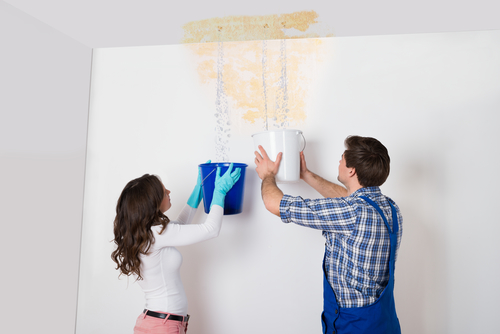Drying Your Home After Water Damage
After a flood, the first step in property restoration is to dry your water-damaged belongings. In the past, there was not a lot of technologies when it comes to the restoration and drying process. Thanks to today’s innovations, there are more powerful tools and equipment that can aid professional restoration companies in getting the job done; these innovations can fully restore water-damaged properties to their original condition with very minimal disruption or intrusion.
There are several ways that water can damage your property. Leaks, floods, broken pipes, or high humidity are some of the most common causes of water damage. If left undiscovered for, the damage will be more severe. The property restoration process should begin within 48 hours. By responding quickly, you can prevent the growth of mold and rust in your home.
We recommend you call restoration professionals to handle any water damage restoration and drying process. Their expertise and equipment will dry out your properties and completely remove water from your home.
Things to Remember
Water Damage Categories
After you experience water damage from a flood or leaky pipe, you would want to get everything back to normal as soon as possible. If you’re dealing with a huge incursion, employ the services of restoration professionals. Here are some things you need to be aware of when handling water damage and its the level of incursion.
Water damage can be brought upon by three categories of water:
- Category 1 – Clean
- Category 2 – Gray
- Category 3 – Black
It’s essential to understand the differences between Categories 2 and 3 – as they may have health risks that need to be explicitly handled. Recovering from Categories 2 and 3 water damage entails extra considerations that we will go over in a future post.
Check All the Damage
What makes property restoration challenging when it comes to water damage is you can only see a small part of the damage. The wetness and moisture are obscured in walls. Thus, it’s vital to check and identify all the areas that might be damaged to hinder the growth of mold.

Fixing the damage to walls will depend on what materials they’re made from. For instance, drywall can often be saved when you respond to the damage quickly. You can also get moisture meters so you can assess the structural foundation of the walls. If it checks out, how you dry the walls will rely on the wall contents. Use flood cuts if there is wall insulation; create weep holes if there is no insulation. If you have a firewall, use staggered cuts. We will also tackle these in a future post. Additionally, you should check your base molding and flooring.
As you await restoration experts to do their property restoration services, here are some of the steps you can take to begin the drying process of your home.
Get Air Moving
The first step you can take is to get naturally moving air to flow throughout your home. Open doors and windows for more improved air circulation. Your cabinet doors and closets should also be opened to aid with the drying. This way works best when the humidity is low.
You can also use high-speed fans to achieve an increased air circulation. These fans can be either rented or bought. If your HVAC unit has been damaged by water, don’t turn your central air conditioning or furnace blower on.
Pump Water
You can rent sump pumps to move excess standing water away from your house. Also, owning a sump pump permanently is another effective way to pump water out.
Dehumidify
Dehumidifying is a crucial part of the drying procedure. It helps take out the water vapor from the air. There are large and portable dehumidifiers you can use. They are ideally placed in rooms with the windows and doors closed to stop moisture from building up.
Shop Vacs
These are large vacuums especially built to remove water. Some shop vacs are crafted to remove water from rugs or carpets. Never use a regular vacuum to take out water from your properties.
Soaked Objects
Check all the water-soaked objects and place them under the sun to remove the moisture buildup. If you have sheet vinyl or linoleum flooring, make sure to remove it to dry out.
Absorb Moisture
Calcium oxide, silica gel, clay, and other desiccant materials can be utilized to absorb moisture. A property restoration step is to put the wet items in an airtight container and seal it completely – along with the desiccant materials. It may, however, take days or even weeks to entirely remove the moisture from the wet items with the use of desiccant materials.